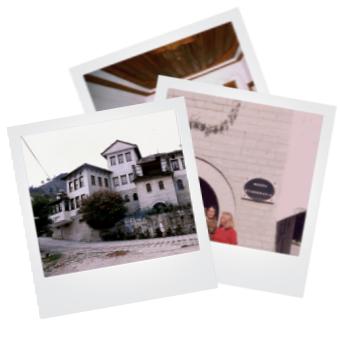The ethnographic museum of Gjirokastër is found in the Palorto quarter, just one street below the level of the castle of Ali Pasha. Originally it is the house where Enver Hoxha, the communist leader was born. It was reconstructed after a fire in 1966 destroyed the original house. From 1966 till 1991 it was the Museum of the Anti-Fascist National Liberation War, showing the history from 1945 onwards with many objects related to Enver Hoxha and comrades. In 1991 it was transformed into an ethnographic museum. The original brochure about the Anti-Fascist museum can still be bought there. The inside of the museum shows all the oda, guestrooms and other rooms in their traditional state, decorated with rugs and other objects, like walking sticks, furniture, handicrafts etcetera. The reconstruction of 1966 was meant to display a traditional Gjirokastër house and has elements of different kind of buildings, copied from existing traditional houses. Some folk dresses are on display. There are also some scale models of typical Gjirokastër houses on display, which give a good view of the construction of the houses. In this respect the museum, although build with a stone roof, is not an example for the typical Gjirokastër “big” houses like the Zekati house. A visit to the Zekati house a bit higher up in Palorto, may be complementary to a visit of the museum.
